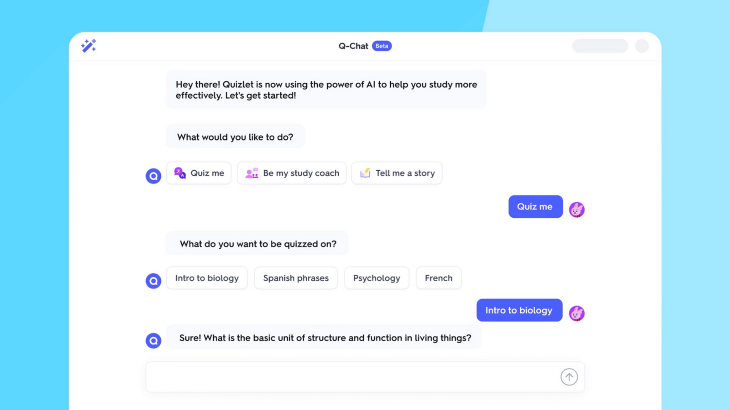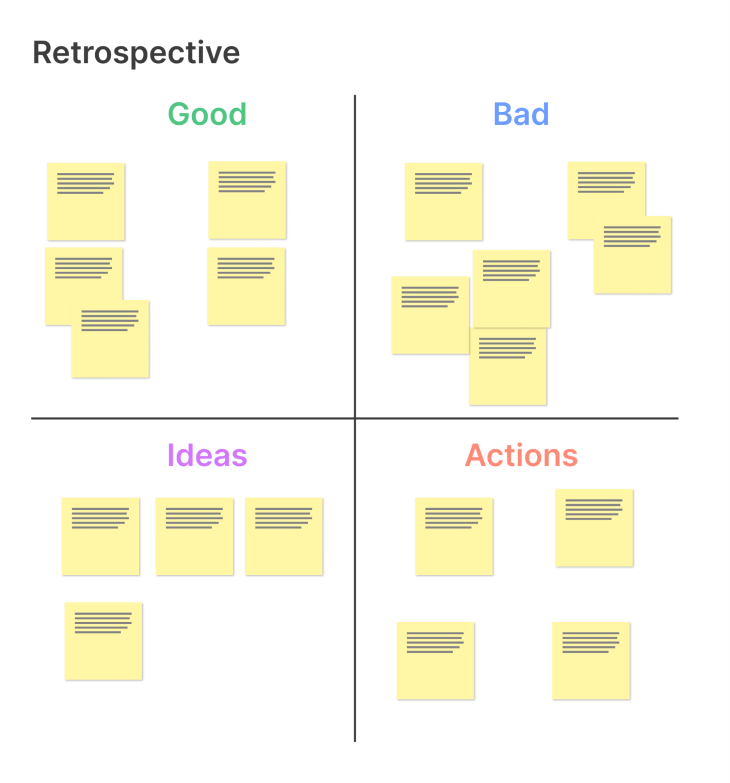Business leaders are always thinking about the future of their company. They want to stay ahead of the curve, maintain a competitive edge, and continue to grow and evolve. Having a clear design vision is essential for any company that wants to create impactful, memorable experiences for its customers. For this, we use our design vision.
What is design vision?
A design vision is a statement that captures your company’s desired future state of design. It’s a clear and concise description of what you want to achieve through design.
Your company’s design vision should be aspirational, yet realistic. It should inspire and motivate your team to create amazing things while also being grounded in the realities of your business and your customers’ needs.
To give you an example, let’s look at Airbnb. Their former VP of Design, Tim Allen, defined the design team’s vision as to “help build the most creative company on earth.” This statement is reflected in their approach of “creating an environment that cultivates curiosity, courage, and creativity, and encourages people to think and act in new ways.” It’s a bold and ambitious vision that has helped shape the direction of the company.
Why have a design vision?
So why is it important to have a design vision? It provides a shared purpose and direction for your team. It helps everyone understand what you’re trying to achieve and why it matters. It also helps you make decisions about what to prioritize and what to leave behind. And perhaps most importantly, it helps you create products and experiences that your customers will love.
In this article, we’ll explore the steps you can take to create a design vision for your company and how you can bring it to life.
Table of contents
Benefits of having a design vision
A company that has a well-defined design vision can benefit in many ways. For starters, a design vision can differentiate your company from competitors by creating a unique and recognizable brand identity. It can also improve the user experience by ensuring that all design efforts are focused on meeting the needs of the customer.
Think about some of the world’s most well-known brands, such as Apple, Nike, or Starbucks. Much of their success is due to their strong design vision, which is evident through their products and experiences. By being intentional about the design of your products, you can create a brand that people love and want to engage with.
But perhaps the most significant benefit of having a design vision is that it can help create a sense of cohesion and purpose within your company. When everyone is aligned around the same design goals and principles, processes become more efficient and it can help drive innovation through cross-functional collaboration. Your teams are more likely to work together effectively, communicate better, and make better decisions.
Furthermore, a design vision helps you stay focused on your long-term goals. It’s easy to get caught up in day-to-day tasks and forget about the bigger picture. But with a design vision, you have a North Star that keeps you moving in the right direction. You can prioritize initiatives that will move you closer to your vision, and avoid distractions that will take you off course.
Assessing your current design strategy
Before creating a design vision for the future, you need to understand your company’s current design strategy. This involves taking a close look at your branding, user experience, and overall design aesthetic to determine where improvements can be made.
Identifying your company’s strengths and weaknesses will help you determine what areas you need to focus on as you develop your design vision. You don’t want to spend all your time and resources on areas where you’re already strong. Instead, you should focus on shoring up any weaknesses to create a more well-rounded and effective design strategy.
Conducting a design audit
A good way to assess your current design strategy is to conduct a design audit. This involves reviewing all of your company’s design assets, including your website, marketing materials, design system, and product experience. Look for inconsistencies in branding and messaging, as well as areas where your user experience could be improved.
You can also review your company’s design metrics — such as user engagement, conversion rates, and customer feedback — to understand how users are interacting with your products and services. This can help you identify areas where your design is working well and those where it needs improvement.
For example, if you notice a high rate of user engagement on a particular feature or product, this can be an indication that your design is resonating well with your target audience. On the other hand, if you see a low conversion rate, this may suggest that your product experience is not effective in guiding users toward a desired outcome.
Reflecting on internal processes
Conduct a retrospective with your designers and other team members for their input on what’s working well and what challenges they’re facing. This can help you identify potential improvements to internal processes so you can alleviate any bottlenecks or roadblocks preventing your design efforts from being as effective as they could be. For example, your development team may be struggling to implement design changes because of outdated technology or insufficient resources.
The key is to create an open and transparent culture where everyone feels comfortable sharing their thoughts and ideas. You may find that some of the best insights come from unexpected sources, so it’s important to listen to feedback from all teams, not just those directly involved in the design process.
Defining your design vision for the future
Once you’ve assessed your current design strategy, it’s time to define your design vision for the future. This involves setting clear goals and identifying key areas for improvement. Consider where you want your company to be in five or ten years and what role design will play in getting you there.
Here are some questions to answer and practical tips to help you develop your company’s design vision.
How can design support your company’s strategy?
First things first, you need to have a deep understanding of your company’s values, mission, and goals. Your values are the principles that guide your behavior and decision-making. They are the beliefs and ideals that your company stands for.
Your mission is your reason for being. It’s the purpose of your business and what you’re striving to achieve.
Your goals are the specific objectives that you’re working towards. They are the measurable outcomes that you’re striving to achieve.
Knowing your company’s strategy will ensure that your design vision aligns with business objectives and values.
Which design trends and technologies do you need to be aware of to stay ahead of the curve?
Another thing to consider is the current design trends and movements that are shaping your industry. Don’t get too caught up in following what’s popular, but keep an eye out for emerging trends, like artificial intelligence (AI) or virtual reality (VR), that align with your company’s values and mission.
You don’t want to be left behind, so it’s important to stay aware of the latest technologies to be able to identify how your company might leverage them in your current offerings.

What do you want your customers to feel when interacting with your brand?
When defining your company’s design vision, it’s also important to think about your target audience. Who are you designing for? What are their needs, desires, and pain points? These are the questions you need to ask yourself when defining your design vision.
One great example of a company that has designed with its target audience in mind is Nike. Their design vision is all about empowering athletes and inspiring people to push their limits. They’ve created products that are comfortable, durable, and functional, all with the goal of helping people achieve their fitness goals. Their designs are informed by their target audience of athletes and fitness enthusiasts.

When designing with your target audience in mind, it’s important to think beyond demographics like age or gender. Consider the psychographics of your audience, such as their values, beliefs, and attitudes. This can help you create designs that truly resonate with your audience and speak to their needs and desires.
What are the most important design-related goals you want to achieve in the next five years?
Ultimately, your goals can be interconnected and help your company create a stronger, more successful brand. Here are a few common goals to aim for across your design organization.
1. Consistency
An important goal to aim for is consistency across all design assets. From your website to your social media presence to your product design, make sure that your brand looks and feels the same across all channels. This will help us create a strong and recognizable visual identity, which is essential for building brand awareness and loyalty.
2. User satisfaction
Think about how UX investments can support overall business objectives, such as gaining more users or improving user retention. Prioritize user experience across all design elements to ensure that your products are easy to use and solve real problems for your users. By gathering user feedback and measuring performance metrics such as Net Promoter Score (NPS), you can learn about where your products need improvement and make incremental changes to your offerings.
3. Accessibility
Accessibility is another important goal to aim for. Every business should strive to create designs that are accessible to as many people as possible, including those with disabilities. This means considering how people with disabilities can have fair and equal access to the same experiences across all your products.
It can pay to design fully accessible products, as your market will open up to a larger audience and prevent your company from being the target of an accessibility lawsuit.
Crafting your design vision statement
Based on your answers to these questions, you can begin to craft a design vision statement that outlines your company’s aspirations for its design strategy.
Your design vision statement should be concise, memorable, and easy to understand. It should also reflect the needs and desires of your target audience and align with your overall business strategy. Here are some tips on how to craft a great design vision statement:
1. Start with your company’s mission statement
Your design vision statement should align with your overall business strategy. Start by looking at your company’s mission statement and values to ensure that your design vision is in line with your company’s goals and values.
2. Define your target audience
Consider the needs and desires of your target audience when crafting your design vision statement. Your statement should reflect how you plan to meet the needs of your customers through your design strategy.
3. Consider your unique selling proposition
Your design vision statement should reflect what sets your company apart from your competitors. Think about your unique selling proposition and how your design strategy can help reinforce it.
4. Keep it concise
Your design vision statement should be short and to the point. Keep it concise and memorable so that everyone in your company can easily remember and understand it.
5. Make it aspirational
Your design vision statement should be aspirational and reflect the future state that you want to achieve. Use inspiring language to convey your vision and inspire your team to work towards it.
Design vision statement example: Amazon

Amazon outlines its mission through its guiding principles as “customer obsession rather than competitor focus, passion for invention, commitment to operational excellence, and long-term thinking.”
Based on these four principles, they’ve distilled them into a vision statement, which is “to be Earth’s most customer-centric company; to build a place where people can come to find and discover anything they might want to buy online.”
With this vision in mind, Amazon’s design strategy focuses on putting its customers first and creating an online marketplace with an emphasis on discoverability.
Remember, your design vision statement should be a guiding light for your company’s design strategy. By crafting a clear and inspiring vision, you can align your team and create experiences that truly resonate with your target audience.
Creating a roadmap
With your design vision in place, it’s time to create a roadmap for achieving it. This involves defining milestones and assigning responsibilities to specific team members. Each milestone should be achievable and measurable, with a clear timeline for completion. Assigning responsibilities will ensure that everyone on your team is clear on their role in achieving the design vision.
When creating your roadmap, it’s important to consider the resources and budget you have available. Be realistic about what you can achieve within your timeframe and budget, and be prepared to adjust your roadmap as needed. Here are some tips on how to create a roadmap that works:
1. Defining milestones
Breaking down your design vision into smaller steps helps to make it more manageable and easier to execute. This involves defining milestones to target along the way as you execute the overall vision.
A milestone should be an actionable phase of your overall strategy that can be tackled in a shorter amount of time. You can start by identifying the key areas of your design vision and then breaking them down into specific tasks that can be assigned to different team members.
For example, if your design vision is to become a fully accessible company by 2027, you can break it down into specific milestones such as conducting an accessibility audit of all your products, starting a usability testing pool of people with disabilities, and ensuring that your products meet at least WCAG 2.1 Level AA conformance. Each of these milestones can then be further broken down into smaller, more manageable steps.
2. Prioritize
Once you have identified the key areas of your design vision, prioritize them based on what’s most important to achieve your overall goal. This involves identifying which areas will have the most significant impact on achieving your design vision and which areas need to be addressed first.
A useful prioritization activity can be done by plotting items on a matrix that weighs different factors in order to set priorities. Some common ones include the Value-Effort matrix or Impact-Urgency matrix.
For example, using the Value-Effort matrix, you might identify improving your product’s navigation as high-value, low-effort while updating all of your brand’s iconography might be low-value, high-effort. Prioritize the quick wins and big bets over fill-ins and time sinks.
3. Assign responsibilities and deadlines
Assigning clear responsibilities to team members is critical to the success of your design roadmap. This involves identifying who is responsible for each task or step in the roadmap and ensuring that they understand what’s expected of them.
By having regular sync-ups within your team, each team member should be held accountable for completing their tasks on time and update the team on any roadblocks that they might encounter, so that others can help them out.
Setting realistic deadlines for each step in your design roadmap is essential to keeping your team accountable and ensuring that you’re making progress toward your goals. This involves determining how long each task will take to complete and setting a deadline for completion.
Communicating your design vision to stakeholders
Once you’ve defined your design vision and created a roadmap for achieving it, it’s important to communicate it to stakeholders and the broader company to gain buy-in and support, especially from executive leadership. The leaders of the company must be on board with your design vision in order for everyone to be fully aligned around the same goals and understand their role in achieving them.
Tie the vision to business objectives
When communicating your design vision to gain support, it’s important to tie it to business objectives. Communicate to stakeholders how your design vision supports the overall strategy of the company, and how it can contribute to achieving key business goals such as increased revenue, improved customer satisfaction, or enhanced brand recognition. By directly tying your design vision to business impact, there’s a higher chance that stakeholders and executives will be interested in funding such a long-term initiative.
Know your audience
If you’re unsure about how to communicate your design vision in the best way, understand that people consume information in different ways, so get to know who your audience is. You can use a variety of mediums to communicate the design vision including a presentation deck, engaging videos, or even a physical design board. By being flexible in the way that you present your design vision, you can ensure that everyone has the opportunity to engage with it in a way that resonates with them.
Keep the conversation going
And don’t assume that one presentation will be enough to communicate your design vision effectively. Continue to engage with stakeholders and update them on progress and developments related to the vision. Create opportunities for feedback and input, and be willing to adapt the vision based on this feedback. By keeping the conversation going, you can maintain enthusiasm and support for the vision over time.
Implementing your design vision
With your design vision in place and stakeholders on board, it’s time to start implementing it. Keep in mind a few things when executing your roadmap, monitoring progress, and making adjustments as needed.
1. Establish clear goals and metrics
Before implementing the design vision, establish clear goals and metrics for success. This will help you track progress and determine whether the vision is achieving its intended outcomes. For example, you may set goals related to increased customer engagement, improved product usability, or enhanced brand recognition.
2. Create an action plan
Based on the goals and metrics you’ve established, create a plan outlining specific steps to achieve the design vision. This may include hiring additional staff, investing in new technology, or partnering with external vendors. The action plan should be detailed and include timelines and budget estimates.
3. Track your progress
Measuring success is critical to ensuring that you’re on track to achieving your design vision and making adjustments if necessary. This involves defining metrics to track progress and measure success along the way. Many companies use frameworks such as objectives and key results (OKRs) or key performance indicators (KPIs) to measure their progress.
Regularly monitor progress against the goals and metrics established at the beginning of the process. This should involve regular check-ins with team members to maintain transparency on how things are progressing. If progress is not meeting expectations, it may be necessary to re-evaluate the action plan and adjust accordingly.
4. Make adjustments as needed
Be willing to make adjustments to the design vision and the implementation plan as needed. This may involve revising goals or metrics, changing the approach to implementation, or even revisiting the design vision itself. External factors such as economic headwinds can affect your plan execution and things will inevitably change. By remaining flexible and adaptive, you can increase the chances of successfully implementing the design vision over the long term.
5. Communicate progress and successes
Communicate progress and success stories to stakeholders and the broader company. Host town halls for the design team to celebrate wins and use them to build momentum and enthusiasm for the design vision. This will also lead to increased visibility of the design team to the wider organization. By highlighting progress and successes, you can reinforce the importance of the design vision and maintain support for its implementation.
Conclusion
Creating a design vision for your company is an important step in achieving long-term success. By assessing your current design strategy, defining a vision for the future, and creating a roadmap for achieving it, you can ensure that your design strategy is aligned with your overall business strategy and well-positioned for growth and evolution.
Don’t be afraid to iterate and adjust your strategy as you go, and remember to communicate your vision and celebrate successes along the way. With a clear design vision and roadmap in place, your company will be well on its way to achieving its goals and staying ahead of the curve.
So if you haven’t already, sit down with your team and start brainstorming your own design vision. What do you want to achieve through design? What values and principles should guide your approach? Keep it simple, yet powerful, and let it inspire you to create amazing things.
Header image source: IconScout
The post Looking forward: Creating your company’s design vision for the future appeared first on LogRocket Blog.
from LogRocket Blog https://ift.tt/tnWv1y9
Gain $200 in a week
via Read more
Source link










Leave a Reply